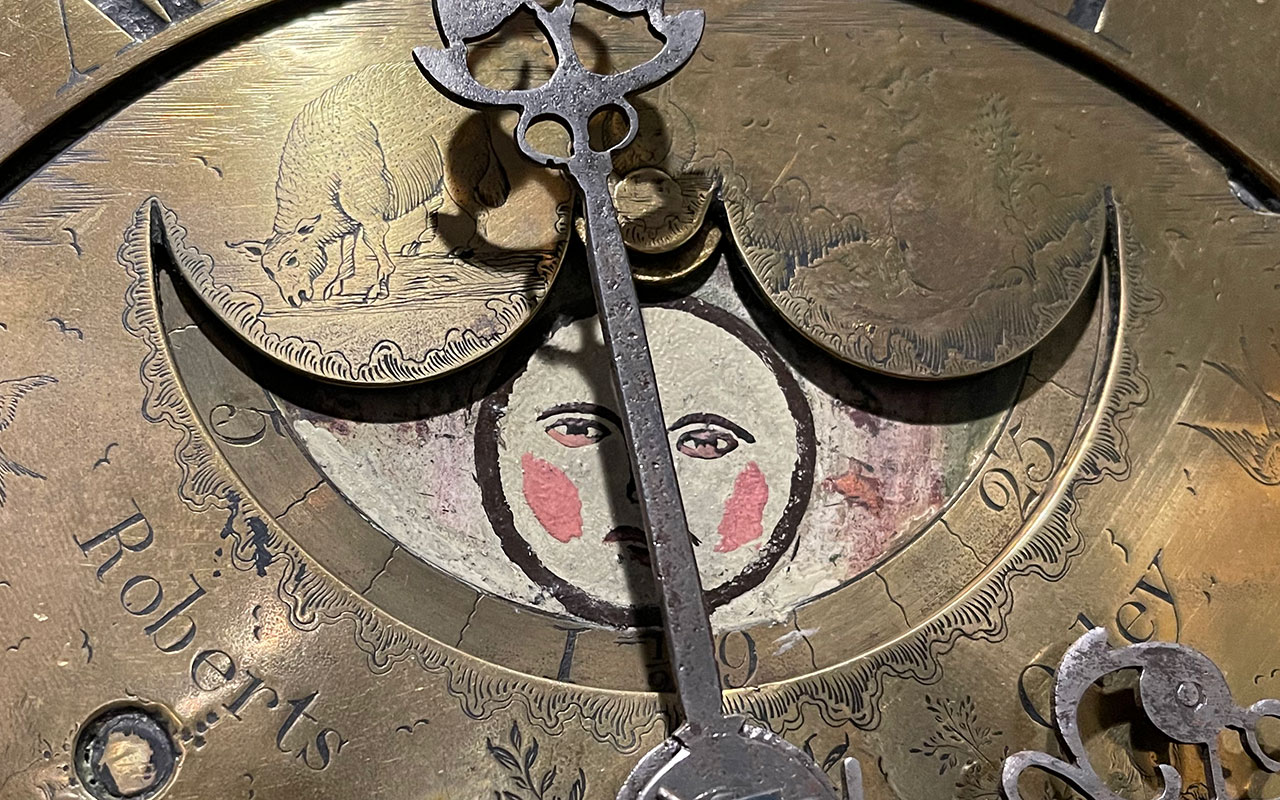Georgian Tall Clock
On a whim, we bought an antique Georgian longcase or tall clock—created during the reign of George III, the Mad King. It had been in the shop for a few months and I believe we walked out with it for about $400. I know “grandfather” clocks can be a hard sell sometimes. We had been looking for one for some time. The age and style of this one struck us. The price meant no argument!
The dial was signed “Roberts” “Otley” and dated 1787.
A little research brought up an article at the British Museum who have similar clocks in their collection. The Roberts were a family of clock makers in Otley, Wharfedale, in Yorkshire, during the 18th century. The three generations began with William Roberts (b. c.1700 – d.1773). He signed his clocks “at Otley”. He was later joined by his son Joseph Roberts, born c.1720. The younger Roberts signed his clocks ‘Roberts – Otley’ and usually dated them. Joseph’s son, Jonathan Roberts (b.1744 – d.1785), probably also worked in the family business.
The faces of tall clocks often depict graphics that are important or emblematic of the commissioner/owner. These commonly depict scenes related to property and occupation. By contrast, this clock depicts whimsical scenes of leisure. A fishing pole protrudes from a bush. A man hands a fancily dressed woman a fish. A dogs runs. A sheep grazes leisurely. My favorite is a fox who sits back to, looking calmly over his left shoulder (you can just make it out in the upper left of the dial’s center in the image below).
We sent the clock out to be repaired by Northshore Clocks in Slidell. We recently received the estimate and gave them the go-ahead to proceed. The dollar amount was not surprising, but it take a year or more. When we were looking for a new grandfather clock, we had the opportunity of touring their workshop. It was fascinating to see the diverse clocks in various states of restoration.
Tall-case clocks began soon after Robert Hooke introduced the anchor escapement in 1658. Prior to his advancement, clock pendulums required too wide a swing to be encased. Hooke’s innovation reduced the required pendulum swing to 4° to 6°. This allowed clockmakers to encase the pendulum and weight mechanisms in narrow tall cabinets below the clock mechanism.
The name “grandfather” clock is uniquely American and originates in a popular song My Grandfather’s Clock composed by Henry Clay Work in 1876. The song was inspired by a visit to The George Hotel in Piercebridge, in County Durham in England. While there, Work noticed a longcase clock. The proprietor told him the clock had had two previous owners. When the first died, the clock stopped telling time correctly. When the second passed, it ceased to work altogether.



Source:


Leave a Reply